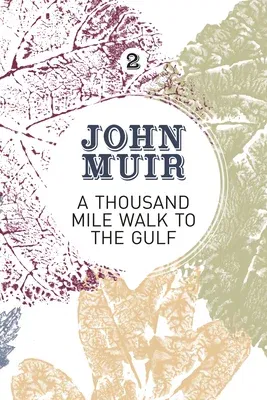'Many a beautiful plant cultivated to deformity, and arranged in strict
geometrical beds, the whole pretty affair a laborious failure side by
side with divine beauty.'
A Thousand-Mile Walk to the Gulf is the second book in John
Muir's Wilderness-Discovery series. It is within this work that we are
really given strong clues toward Muir's future trailblazing movement for
environmental conservation, in such comments as 'The universe would be
incomplete without man; but it would also be incomplete without the
smallest transmicroscopic creature that dwells beyond our conceitful
eyes and knowledge.'
Muir's walk from Indiana to Florida was conceived in order to explore
and study further the flora and fauna across states. He undertakes this
alone, a dangerous choice perhaps so soon after the civil war, as many
characters along the way forewarn. Indeed, Muir is threatened by a
robber, and we see a new side to the quiet, lowly gentleman we know as
he springs into self-defence mode with lightning initiative and
remarkable courage.
This is not the only facet of Muir's personality that is uncovered
throughout this journey. He makes reference to feeling 'dreadfully
lonesome and poor', which is intriguing as his circumstances are
self-sought: 'Stayed with lots of different people but preferred
sleeping outside alone where possible'. He spends a substantial period
of time struck down with malaria, which does not come as a surprise; he
was covering many miles on an unsustainably meagre diet with thirst
often quenched with swamp water or not at all.
Join Muir in Kentucky forests, Cumberland mountains, Florida swamps and
all the elegantly described trees, plants, creatures and rocks
in-between. A Thousand-Mile Walk to the Gulf teaches us as much
about Muir himself as it does the ecosystems in the wilderness across
those 1,000 miles.


